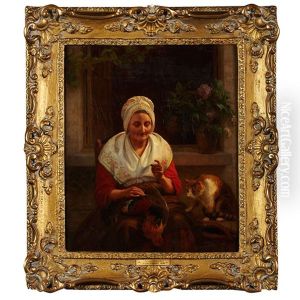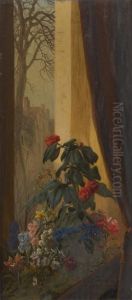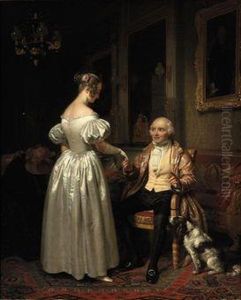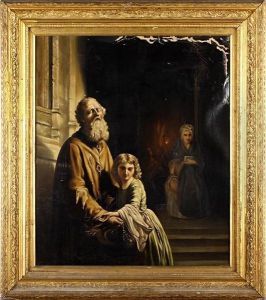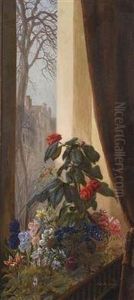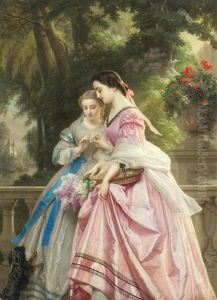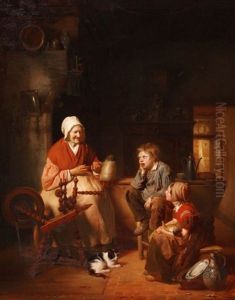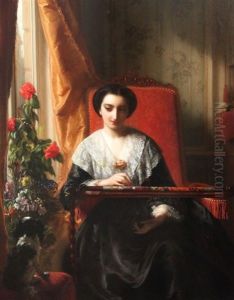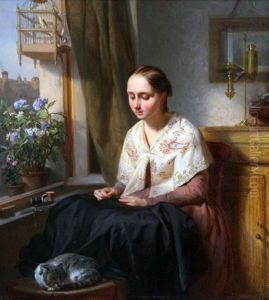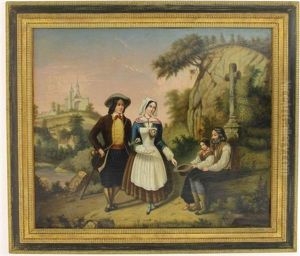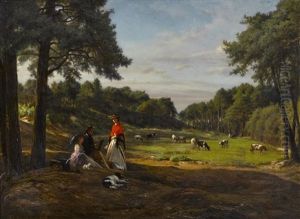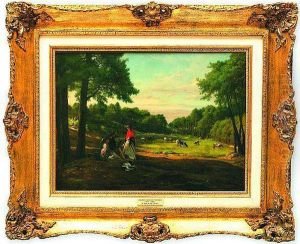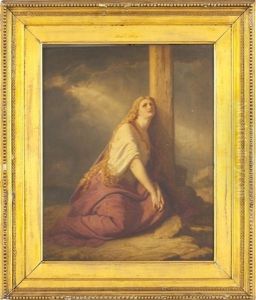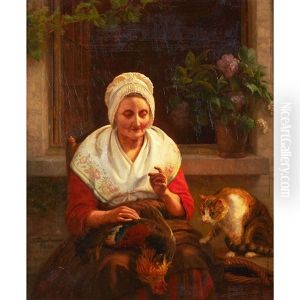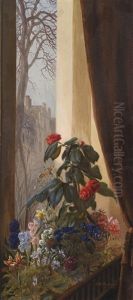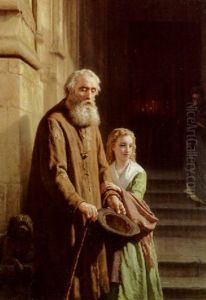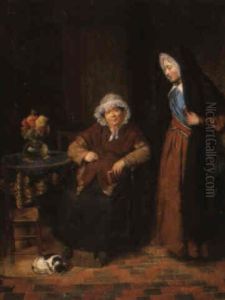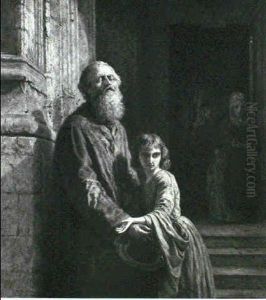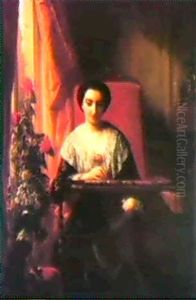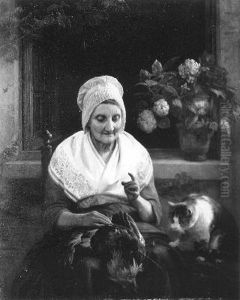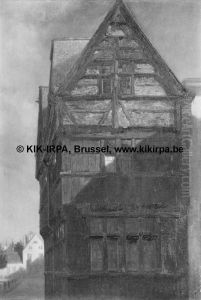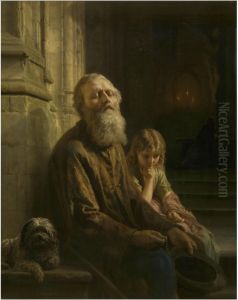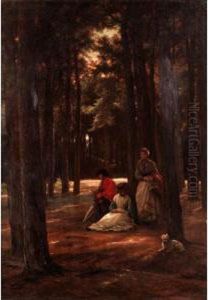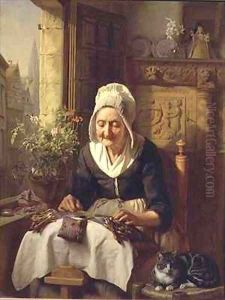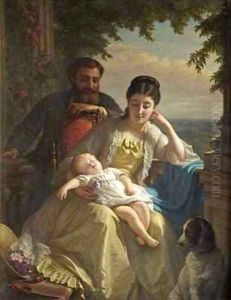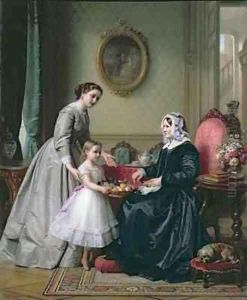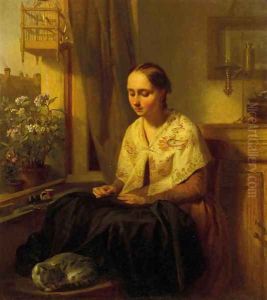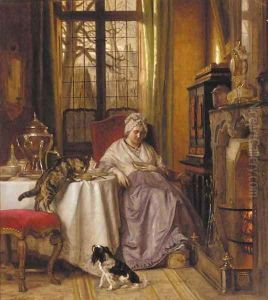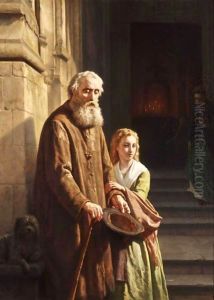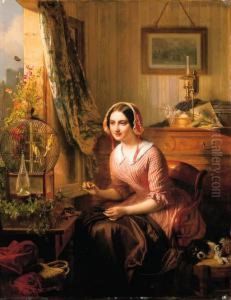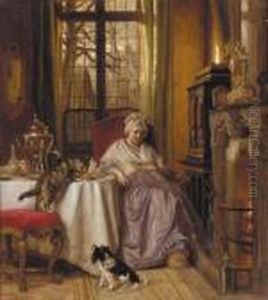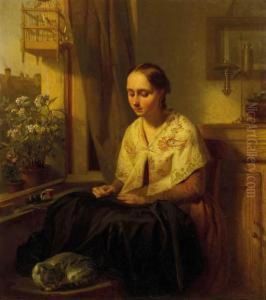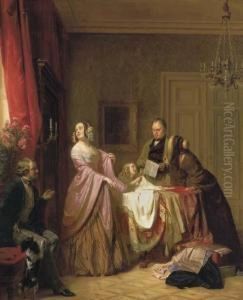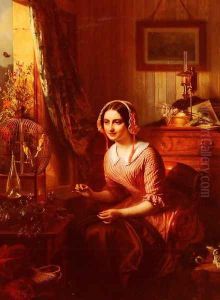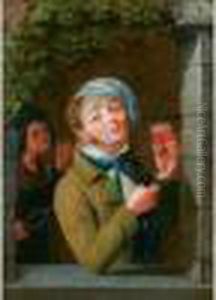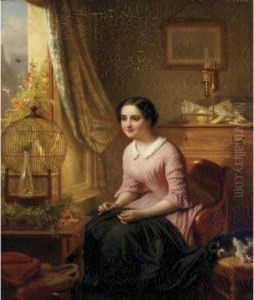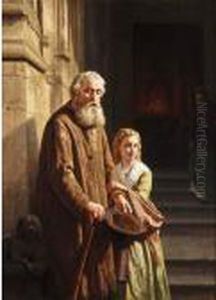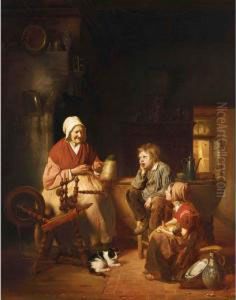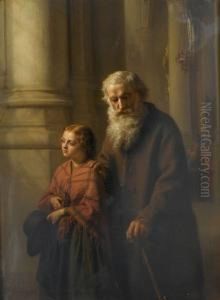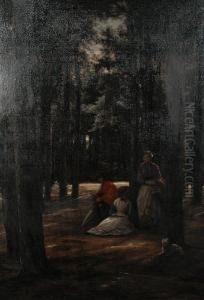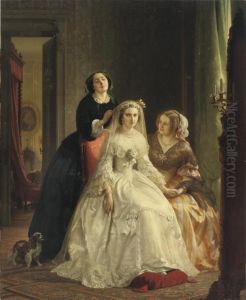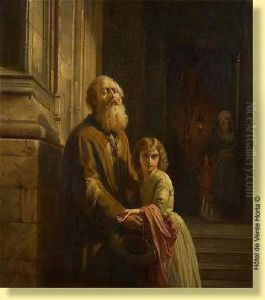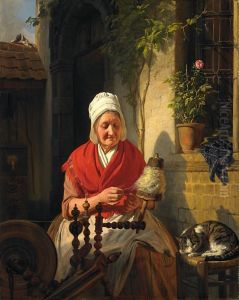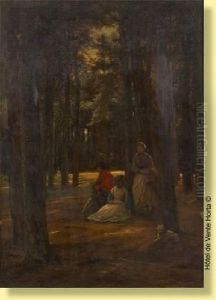Josephus Laurentius Dyckmans Paintings
Josephus Laurentius Dyckmans, known as Joseph Laurent Dyckmans, was a Belgian painter born on August 9, 1811, in Lier, Belgium. He is recognized for his highly detailed and meticulously crafted genre paintings, often depicting scenes of domestic life and the interiors of Flemish homes during the 19th century. His works are characterized by their remarkable attention to texture, light, and the minutiae of everyday objects, which he rendered with an almost photographic realism.
Dyckmans initially trained at the Academy of Fine Arts in Antwerp, where he studied under the tutelage of artists such as Ferdinand de Braekeleer. His talent was evident early on, and he quickly developed a style that was both precise and evocative. Despite the influence of his contemporaries and the prevailing Romantic movement of the time, Dyckmans's work retained a distinctive clarity and stillness that set him apart from his peers.
Over the course of his career, Dyckmans gained considerable acclaim for his work. He exhibited at various salons and exhibitions, receiving numerous awards and honors. His paintings were sought after by collectors and art lovers, and he achieved significant financial success during his lifetime.
Some of Dyckmans's most famous paintings include 'The Blind Beggar', which showcases his ability to evoke empathy and narrative through his depiction of a blind man and his guide, and 'The Lace Maker', a fine example of his skill in portraying the quiet concentration of a young woman absorbed in her delicate craft.
Joseph Laurent Dyckmans's influence on genre painting and his mastery of detail have earned him a place among notable 19th-century Belgian artists. His works continue to be appreciated for their technical excellence and their charming portrayal of simple, everyday moments. Dyckmans died on January 8, 1888, in Antwerp, leaving behind a legacy of art that continues to be studied and admired for its precision and beauty.
